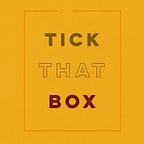Creative resistance in a time of despair: the past (part 1)
Forms of resistance have often been forced to be creative to get around rules or mechanisms designed to control the very people protesting them. This is part one of a two-part series.
Writing from lockdown has, unsurprisingly, caused me to re-frame the way I think, feel and process information. Everything has this additional perspective to it now, the knowledge that things are not going well, the constant announcements that people are dying alarmingly quickly, and the deep frustration of seeing communities left at the mercy of heartless leadership. Above all, the acknowledgment and gratitude towards my personal situation sits firmly at the forefront of my brain, reminding me how lucky I am. It also reminds me that many of the rights I take for granted in my life have been hard fought for by those who came before me — a price they often paid with their life. And finally, it makes me think of how far we have to go to create a society based in equity, acceptance and kindness.
The only thing that stops me from getting too in my feelings about this is by reflecting on the incredible movements practicing creative resistance, in response to both old and current problems experienced by minority or vulnerable groups.
So, what is creative resistance? The term is broad, but I use it here to both refer to alternative or creative means of protesting, and to refer to the use of art — in all forms — that makes a statement against injustice or inequality.
Let’s begin with an overview.
Historically, when marginalised groups have organised in resistance it has often been in response to extraordinary times. From the Peasants’ Revolt against socio-economic injustice in 1381, sparked by the Black Death, to the boycott of Barclays Bank during Apartheid in the 1970’s; communities have used creative methods of resistance to challenge social injustice, which have inevitably been woven into art and culture. Forms of resistance have often been forced to be creative to get around rules or mechanisms designed to control the very people protesting, such as the Suffragettes’ method of chaining themselves to railings in the early 1900s to prevent police from physically removing them from protests. Another example is the British Black Panthers, who set up alternative schools staffed by volunteers, challenging white oppression in the education system in the 1970s and 1980s when they found that the British education system refused to add ‘African’ knowledge to the curriculum.
Other communities have rallied to create spaces where long vilified and marginalised perspectives can flourish; The Feminist Library in London was founded in 1975, and protects revolutionary intersectional feminist work — including some of Britain’s lesser championed feminists of colour. Surviving through volunteers and affordable membership fees, the Library has launched a digital book club featuring the works of marginalised authors, and regularly hold fundraisers for diverse womxn’s charities. The importance of the grassroots originated Glasgow Women’s Library has often been overlooked due to the North/South classist divide in the UK, but it has been running since 1991 and is the only accredited women’s museum in the country.
Even so, the struggle of non-white artists is barely being recognised for being a systemic problem.
But artistic spaces and feminist movements have also often failed to recognise Britain’s colonial legacy, and had problematic attitudes towards race and the global south. In 1979, the BLK Art Group was formed out of black British activists’ desire for a British pan-African and black power movement. They empowered and encouraged black voices and used their creative abilities to challenge race relations in the UK, organising the first National Black Art Convention in 1983. Some founders of the BLK movement, including Marlene Smith, Keith Piper and Donald Glover, showcased their work in a powerful exhibition entitled ‘Black Art, Black Power: Responses to Soul of a Nation’ at the Tate Modern in 2017. The exhibition depicted the formation of the BLK and its transformative art work during a period where black artists found it close to impossible to exhibit their work.
Even so, the struggle of non-white artists is barely being recognised for being a systemic problem. The only comforting thought about this is that it is at last slowly beginning to change, thanks in part to growing diversity in the UK. Feminist movements are gradually evolving to become intersectional, reflecting the lived realities of not only people of colour, but diverse sexualities, religions, classes and abilities.
Contemporary British art and culture has a lot of work to do to reverse the decades of racism and marginalisation — not to mention the lack of representation that still plagues every area of creative expression. There is a pervasive idea that runs through the directors, publishers, critics, producers, directors, curators, casting directors and any other position responsible for sourcing and amplifying creative work, and it is a killer. It is the idea that minority groups will only ever be marketable to minority audiences, and mainstream content consumers demand mainstream content. This is a convenient perspective that ends up becoming a self fulfilling prophecy. It not only keeps minority experiences trapped in minority corners, it ensures that mainstream creative expression like cinema, theatre, music, will remain narrow and whitewashed, and fail to open up the cultural palette of the majority of British consumers. It is also a lie.
This is part one of a two-part series on creative resistance. Keep an eye out for part two, which looks at present day examples of activism and protest in the context of COVID-19.
